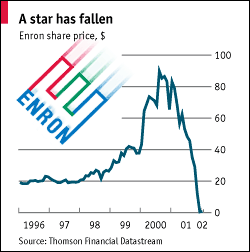At CNote, we want our members to be informed, empowered investors. That means addressing some core ideas and misconceptions involving personal finance. One of those fundamental misconceptions that plague even experienced investors, is the difference between risk and volatility.
Today, using the recent moves in Bitcoin we want to explain why the distinction between risk and volatility is important, and how you can use your understanding of risk and volatility to better shape an investment portfolio that matches your long-term goals.
What this article won’t do is give you any investment advice, especially about where bitcoin is headed. Anyone that tells you they know with conviction where bitcoin will be priced in the future is just guessing like the rest of us, or maybe they have a great psychic…
Table of Contents
- 1 A little background on Bitcoin over the last few months
- 2 Volatility
- 3 Risk is not volatility
- 4 What are we measuring?
- 5 Is Bitcoin risky?
- 6 Great, but how does this distinction help me make investment decisions?
- 7 Diversification, risk management, and understanding volatility
- 8 What does this have to do with community lending and CNote?
A little background on Bitcoin over the last few months
On December 17, 2017, we saw the price of Bitcoin (BTC) peak around $20,070 USD. Around 30 days after hitting that high, BTC dropped down to $9,650 on January 17th. More than a 50% decline. This move took the market cap from $336B to $167B, “destroying” around $160B in paper wealth.
Let that sink in for a moment.
In 30 days more than $167B dollars in digital wealth vanished.
Poof!
That significant of a price swing in such a short time is a classic example of volatility. There were many days where BTC would move multiple percentage points up or down, sometimes even making double-digit percentage moves in a single day. Such large price swings in such short periods of time can reasonably be classified as extreme volatility.
But what exactly is volatility a measure of?
Volatility
Volatility is commonly defined as the propensity for something to change rapidly and unpredictably. If you went to Investopedia, you’d get a definition talking about the dispersion of statistical returns and a statement that “volatility refers to the amount of uncertainty or risk about the size of changes in a security’s value.” But let’s hold off on that bit about risk for now…
At its core, volatility is a measure of price movement.
That sort of move we discuss above, a 50% decline in 30 days, is an example of volatility.
Clearly, Bitcoin over the last few months has been volatile. Indeed, as of writing (Early February 2018), Bitcoin is now back under $9,000 after reaching an intermediate top on January 20th of around $13,000.
Again, big moves in a short time. That is volatile price action.
But is it an example of risk?
Doing jumping jacks on the edge of this cliff is an example of risk.
Risk is not volatility
In talking about the important distinction between risk and volatility, Warren Buffet made clear that they are not synonyms:
That lesson has not customarily been taught in business schools, where volatility is almost universally used as a proxy for risk. Though this pedagogic assumption makes for easy teaching, it is dead wrong: Volatility is far from synonymous with risk. Popular formulas that equate the two terms lead students, investors and CEOs astray.
Risk, at its core, is one’s exposure to loss. In many instances, risk can be presented as a probability. In a coin flip, you have 50% risk of losing.
Even though a coin flip, in the short term, could prove volatile (getting 10 heads in a row) over the long run your risk will hold right around 50/50. As long as you have money to keep making the bets and don’t quit the game, you’re likely to end up with a 50/50 split even if you hit a bad run.
So, Bitcoin is clearly volatile, but is it risky?
What are we measuring?
Again, it is important to make the distinction between these two terms, risk and volatility.
Volatility is a measure of movement, specifically price movement. Volatility is easy to calculate because it is generally backward-looking and accounts for the price moves that have occurred.
Risk, on the other hand, is a measure of the probability of loss. Risk is difficult to calculate because it is forward-looking and tries to predict the future value of an asset.
It is worth noting that volatility can make an investment more risky to the extent that large price swings can induce investors to capitulate and sell their holdings. But volatility does not equal risk.
Right now, Bitcoin is extremely volatile.
However, the more important question to ask is:
Is Bitcoin risky?
Risk is a fundamental question. Will this business succeed? Will this outcome be the one I expected? Will the coin land the way I called it?
Applying this fundamental analysis to our example, the question might be something like:
- Will Bitcoin usher in a new paradigm in payments and financial transactions?
- Is Bitcoin the next reserve currency of the world?
- Is Bitcoin a bubble that will pop?
- Will governments step in to regulate Bitcoin exchanges?
How you answer those questions, will color your opinion about how risky bitcoin is.
Risk is based on a subjective assessment of fundamentals.
No one participating in an efficient market with equal information distribution can predict an investment’s outcome (and risk) prior to investing–there are no sure things. We can assess risk based on our knowledge, expertise and the data available to us.
Ultimately, however, risk assessment is a value judgment.
If the risk of a given investment was perfectly known going in, then buyers and sellers would immediately take advantage of that investment until all potential profits were captured. In the real world, what we see happen is that people make calculated decisions and then adjust based on new information as it becomes available.
Indeed, any investment choice you make should be a calculated decision about whether you think the asset you are purchasing has an attractive risk/reward profile for your investment needs.
If you think bitcoin is the future world reserve currency, then you likely expect prices to rise substantially in the long run. Which means, any short-term volatility is irrelevant to you and your downside risk is minimal.
If you think bitcoin is a bubble and will come and go like the beanie baby craze, then you think bitcoin is extremely risky because the likelihood of a total loss is very high.
But both of these people, those that think bitcoin is the future and those that think bitcoin is a bubble, even with their different views of underlying risk, should both agree that bitcoin is volatile. Because it is.
Again, volatility is not risk.
Great, but how does this distinction help me make investment decisions?
Knowing that volatility does not necessarily mean an asset is risky, will allow you to weather price moves in an investment when you are confident about the underlying risk profile.
In more direct terms: by conceptually being able to distinguish between risk and volatility you can avoid selling a position too early or holding a position too long because volatility is high, or very low.
A stock, for example, can move up and down due to: market conditions, an important executive getting poached, a lawsuit, or a product defect, but as long as the fundamentals of the business remain unchanged the risk of owning that asset is unlikely to increase dramatically.
Put another way, if the fundamental investment thesis you have about that company has not changed, then your risk profile is likely to be unchanged, meaning that you can take advantage of the short-term volatility as either a buying or selling opportunity depending on your strategy. A stock can be very volatile due to psychology or market volatility, while the underlying risk associated with a company can remain relatively low.
It is worth nothing, that that contrary can be true as well. A company can have relatively low volatility yet its underlying risk profile can be extremely large. History is full of examples, Enron’s stock chart being one.

Photo Credit Economist
That chart shows smooth and consistent gains over time with relatively low volatility and then a precipitous crash from $90 to $0 a share in a matter of months. With the decline, it is easy to confound risk and volatility. In reality as the sentiment around Enron’s accounting practices and bankruptcy became clear, the risk of owning that stock became apparent which resulted in panicked selling. Risk can certainly beget volatility.
Diversification, risk management, and understanding volatility
A key to successful investing is building a diversified portfolio of assets you believe in. Diversification prevents you from being beholden to any one sector or part of the economy.
It’s the classic lesson we learned as children: don’t put all your eggs in one basket. It prevents a disaster like Enron from wiping out your retirement account.
If you build a diversified portfolio of assets you’ll be more protected from anomalous and volatile moves in the market. Additionally, your ability to appreciate volatility versus risk, will better help you evaluate when to enter and exit investments.
Another key to capitalizing on volatility is knowing your time horizon. If you are long-term investor and believe your investment has a large margin of safety baked in, short-term volatility will have no impact on your decisionmaking–its just noise along the way.
What does this have to do with community lending and CNote?
The CNote team loves talking to potential customers and investors about our product and our mission of making finance simple and more inclusive.
One of the most common questions we get is something like: Why would I invest with CNote and get 2.5% when I can invest in XYZ and get x% return?
The answer to that question is one of risk-adjusted returns. Right now, the returns on equity investments and many forms of debt have been historically strong.
The questions you must answer yourself is: what is the underlying risk in those assets should a correction happen?
How does the risk/reward of these investments compare to other investments, including CNote?
Does the risk profile of CNote make it an attractive part of my overall investment portfolio?
By thinking about these important questions you should be able to better allocate capital and weather potential financial corrections as they arise.
Learn more about CNote by visiting our Risk & Return page.










